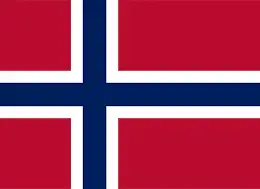Which Plywood is More Suitable for Laser Processing?
Plywood Introduction
Plywood, commonly called tri-ply or multi-ply, is a practical building material and also a common laser processing material. Plywood is made by gluing thin veneers of wood together. Plywood has an odd number of layers, with the wood grain directions of adjacent layers perpendicular to each other. Compared with solid wood boards of the same thickness, plywood is stronger and less prone to breaking, shrinking or deforming.
Currently, common plywood types on the market can be divided by wood species into birch plywood, poplar plywood, eucalyptus plywood and mixed plywood, etc. The different properties of the raw materials also lead to slight differences in the properties of the plywood. Poplar plywood has a high cost-performance ratio, good processing effects, and is easy to purchase, making it the most commonly used plywood for laser processing. Birch plywood is more commonly used in foreign markets.
Poplar Plywood
Birch Plywood
Birch plywood is made from birch wood. Birch is denser and harder than poplar with better strength. When made into plywood, it is very sturdy, durable and water-resistant, making it one of the most robust and stable plywoods in the industry. Using the same machine settings and material thickness, laser processing birch plywood requires higher power or lower speed settings compared to poplar plywood.
Birch plywood is easy to process with good machinability. It can be laser cut into extremely fine shapes with smooth, narrow kerfs that can be easily sanded, polished, and glued for assembly. The fine texture and light color of birch are similar to but slightly darker than poplar, making them easy to confuse. Laser engraving produces high contrast and clear, aesthetically pleasing patterns. Birch plywood can be painted or stained to present colorful artistic forms.
Birch has no peculiar odor, but some people may be allergic to it. Birch boards require protection against moisture and pests during storage.
Poplar Plywood
Poplar plywood is made from fast-growing poplar wood, which is slightly softer than poplar. Due to its longer fibers, it is more prone to warping and fuzzing. Poplar is less dense and harder than poplar, with similar strength. Poplar can be processed using the same settings as poplar.
Poplar has an even texture and light yellow to white color, appearing similar to but slightly darker than poplar. Laser cutting poplar leaves obvious black residue; after engraving, the patterns have high contrast, but the engraved areas show obvious wood grain with mottled white patches. Poplar plywood can be painted and stained. However, the loose surface of poplar plywood can be easily damaged even by light wiping.
Compared to Poplar Plywood
1.Cutting and engraving settings for poplar are similar to poplar
2.Poplar is softer and easier to cut, but leaves obvious black residue after cutting
3.Poplar is soft and prone to fuzzing, easily damaged by wiping. Not as good as poplar.
4.Overall, poplar is a better material for laser cutting
Poplar is unlikely to cause allergies, but has a more noticeable odor compared to poplar that some people may find unpleasant. It requires protection against moisture and pests during storage.
Overall, poplar plywood has a lower cost-performance ratio than poplar plywood for laser processing.
Eucalyptus Plywood
High-quality eucalyptus plywood is made from red mahogany eucalyptus wood, which is an imported wood denser, harder and stronger than poplar. However, eucalyptus plywood is more difficult to process and requires relatively sharp cutting tools for planing. Red mahogany has a cross-grained or wavy texture, a medium to coarse texture with many knots, and a reddish color.
Red mahogany has no peculiar odor, but some people may be allergic to it. Eucalyptus plywood requires protection against moisture and pests during storage.
Pure eucalyptus plywood is rare and difficult to purchase in China. However, some thicker plywoods use poplar as the face veneers with a eucalyptus core.

.png) International
International
 United States
United States
 Brasil
Brasil
 Canada
Canada
 Costa Rica
Costa Rica
 Česká
Česká
 Ελλάδα
Ελλάδα
 Polska
Polska
 Ireland
Ireland
 Portugal
Portugal
 Lietuva
Lietuva
 Россия
Россия Deutschland
Deutschland
 Britain
Britain
 Україна
Україна
 France
France
 Sverige
Sverige
 Italia
Italia
 Norway
Norway
 Denmark
Denmark
 Romania
Romania
 한국
한국
 中国
中国
 ประเทศไทย
ประเทศไทย
 中国香港
中国香港
 Israel
Israel
 中國臺灣
中國臺灣
 India
India
 پاکستان
پاکستان
 پශ්රී ලංකා
پශ්රී ලංකා
 ジャパン
ジャパン
 Australia
Australia
 New Zealand
New Zealand
 South Africa
South Africa